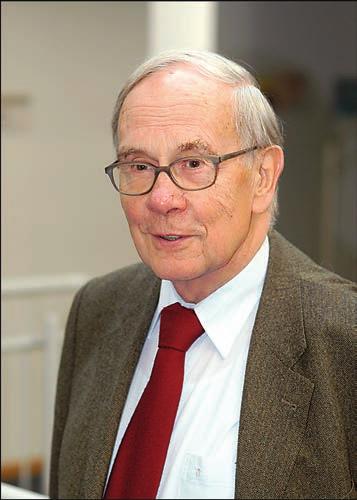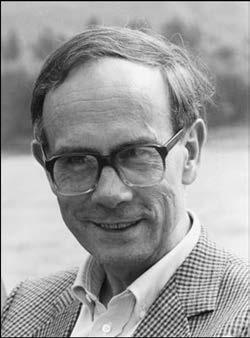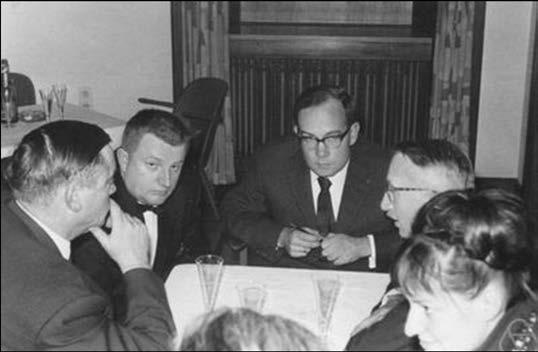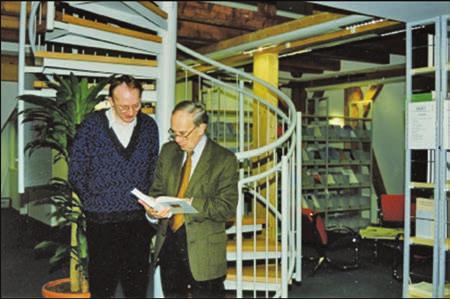Michael Atiyah and Don Zagier, Coordinating Editors

Friedrich Hirzebruch (universally known as Fritz) died on May 27, 2012, at the age of eighty-four. He was the outstanding German mathematician of the postwar years who helped to restore mathematics in his country after the devastation of the Nazi era. Appointed at a very early age to a full professorship at the University of Bonn, he remained there for the rest of his very active life and moved the center of gravity of German mathematics from the traditional centers of Göttingen and Berlin to Bonn. The famous “Arbeitstagungs” (more properly Arbeitstagungen), which he established in Bonn in 1957, have been running annually or biannually ever since and are a focal point of mathematics worldwide. They carried his personal imprint in their content, attendance, and style, being always broad, topical, and informal and doing much to educate succeeding generations and to foster cross-fertilization. Many new ideas and collaborations grew out of these encounters. Another lasting contribution to mathematical research in Germany and in the world is the Max Planck Institute for Mathematics, which he founded, operating on the same lines and creating bonds between mathematicians from many countries, including those that were otherwise cut off from the international scene.
Although Fritz, given his multiple roles, retired several times, he remained active till the very end and was preparing to attend a conference in his honor in Poland when he was struck down.
In this introduction we will give an overview of Fritz’s life and of some of his most important achievements. More detailed accounts will then follow in the individual articles by the two coordinating editors, with the one by Atiyah concentrating on the work in topology and the years before 1970, and the one by Zagier on the work in number theory and the years after 1970. The subsequent articles by the invited contributors describe further aspects of his personality, his scientific work, and the role that he played in the mathematical lives of many individuals, organizations, and countries. \[\ast \qquad\qquad \ast \qquad\qquad \ast\]
Friedrich Ernst Peter Hirzebruch was born on October 17, 1927, in Hamm, Germany, to Dr. Fritz Hirzebruch and Martha Hirzebruch (née Holtschmit). His father, who was the headmaster of a secondary school and himself an inspiring teacher of mathematics, gave him his first introduction to the subject — including, when he was nine years-old, the proof that \( \sqrt{2} \) is irrational — and the love of it that was to last throughout his life.
Still a teenager, Fritz was drafted into the German army during the final year of World War II, but his military career was mercifully short and he was never sent into combat, being assigned instead to an antiaircraft battery with the task of computing artillery trajectories. He was even able to attend some scientific courses, though when his commanding officer asked him on one such occasion to confirm that winter and summer are caused by the earth’s varying distance to the sun and Fritz dared to contradict him, pointing out that then the seasons in Germany and Australia would coincide, he was punished for insubordination. In the final months of the war the Americans put him into a prisoner of war camp, and even there he managed to do mathematics (partly on toilet paper, still preserved today). He was released in July 1945 and entered Münster University that winter.
The city and the university lay in ruins and conditions were very difficult, with lectures being held only at long intervals, but he had very good teachers, especially Heinrich Behnke, from whom he learned the function theory of several complex variables, and Behnke’s assistant, Karl Stein, a former pupil of his father’s. His third teacher was Heinz Hopf, a German who had gone to Switzerland before the Nazi takeover and who invited the young Fritz, first to be his house guest and then for one and a half years to be a research student at the ETH in Zürich. Fritz returned to Münster with the essentials of a beautiful doctoral thesis about the resolution of certain singularities in complex surfaces. Already this earliest work showed the characteristics of all of his mathematics: elegance and brevity of thought and exposition, an effortless synthesis of sophisticated theoretical ideas with insights inspired by nontrivial concrete examples, and the fusion of ideas from analysis, topology, and number theory.
In 1952 came the development that was not only to be a turning point in Fritz’s mathematical career but, as it transpired, to have a major influence on the later development of mathematics in Germany and in Europe: he was invited to the IAS in Princeton, where he remained for two years. At the IAS, he came into contact with many of the most brilliant mathematicians and most exciting new ideas of the period and where he made the two discoveries with which his name is most strongly associated: the Signature Theorem and the Hirzebruch–Riemann–Roch Theorem. Those years and also the early years in Bonn, when the core of Fritz’s research was still in topology and its applications to algebraic geometry, will be discussed in detail in the contribution by Michael Atiyah.

This period also included three major events in Fritz’s personal life: his marriage to Inge Spitzley in August 1952 just before taking the boat to Princeton, and the birth of his first two children, Ulrike (1953) and Barbara (1956). His third child, Michael, was born a little later, in 1958. Inge, known to and loved by countless mathematicians, was a big part of everything he built up during his life. Both of his daughters later studied mathematics and eventually worked in related areas (Ulrike in mathematical publishing and Barbara as a schoolteacher), while Michael was to become a doctor. Ulrike’s contribution to this article gives us a vivid picture of Fritz as a father.
When Fritz returned to Germany in 1956 to take up his duties at his new chair in Bonn, he had a clear ambition and a mission: to establish a center that would attract mathematicians from all over the world. After the First World War, German mathematics had been ostracized by the international community, led by France. This lasted for many years and embittered relations. Fortunately, the 1945 generation of French mathematicians, led by Henri Cartan, was more enlightened, and prewar mathematical friendships were rapidly renewed. The Münster school members under Heinrich Behnke were welcomed back into the field by Cartan, while Fritz, part of the Behnke team, played a full role in this rapprochement. So with his Princeton contacts, including Kodaira from Japan and the new talent emerging from Paris ( Serre, Borel, Grothendieck, …), Fritz was well placed to reintegrate German mathematics into the world community. Contacts with Britain came initially via the Cambridge geometry school of Hodge and Todd and later the younger generation (Atiyah, Adams, Wall, …). The division of Germany and, more generally, the cold war partition of Europe were particularly challenging, but Fritz spent many years of his life forging links between East and West, including notably the German Democratic Republic and the Soviet Union.

He achieved his goals remarkably quickly. At Bonn University he built up the mathematics department to a high level, doubling the number of full professors and attracting people such as Klingenberg, Tits, Brieskorn, and Harder. The Arbeitstagung, which he established in 1957, soon served as a worldwide meeting point and attracted many who would never otherwise have returned to Germany. But Fritz’s main goal stemmed from his experience in Princeton: to set up a visitors’ center modeled after the IAS. A first attempt to create this as a Max Planck Institute failed because of the opinions of various referees (including Courant and Siegel) that, at least at that time, there were better ways to use both Fritz’s talents and the taxpayers’ money to further mathematical research in Germany. But some ten years later, when the German Research Council (DFG) set up a new research program for German universities whose units (called Sonderforschungsbereich or “Special Research Domains”, abbreviated SFB) would be supported for a limited period of time, Fritz presented his ideas of a visitor center to the decision committee and came back with two SFBs: one (SFB 40, with himself as Sprecher or chairman) for theoretical mathematics and one (SFB 72, with Rolf Leis and Stefan Hildebrandt) in a more applied direction. With his Sonderforschungsbereich, he started the envisaged visitor program on a limited basis. This turned out to be so successful that when the support ended and Fritz applied for a takeover from the Max Planck Society, his project no longer met with the former reservations, and a permanent Max Planck Institute for Mathematics was founded in Bonn in 1981 and has been flourishing ever since. Through the Arbeitstagung, the Sonderforschungsbereich, and finally the Max Planck Institute, Fritz created an extensive visitor program that he guided with his many outstanding qualities: his personal tastes in mathematics were broad and generous — he was no narrow specialist; his international contacts were extensive; his efficiency became legendary; and above all, he encouraged an informal and friendly atmosphere, far removed from the traditional rigidity of German academia.
After about 1970 the main thrust of Fritz’s mathematical work slowly moved from pure topology and algebraic geometry to the connections of these domains with number theory. They will be discussed in more detail in the contribution by Don Zagier. During these years he also became more and more active and influential in the development of mathematics, both nationally and internationally. These activities, which will be described in more detail later, included most notably his unflagging efforts to build up relations with the countries of the Eastern Bloc, his many contributions to rehabilitating Germany’s image after the years of the Third Reich and to creating new scientific and human bonds with Israel, his two presidencies of the German Mathematical Union, and his roles as first president of the European Mathematical Society (described by Bourguignon) and as honorary president of the International Congress of Mathematicians in Berlin in 1998.

During all the years before the Iron Curtain fell, Fritz indefatigably kept up contacts with mathematicians in the Eastern Bloc, no matter how much effort this required and how unavailing it seemed. Russian mathematicians were always invited to the Arbeitstagung, though only once — perhaps because of an oversight by the Russian bureaucracy? — were some of them allowed to come: in 1967, Anosov, Manin, Postnikov, Shafarevich, and Venkov took part, and all of them gave a talk. But these efforts were not in vain, because, as we learned later, the yearly invitations to come to Germany, even when they had to remain unanswered, often helped their recipients by demonstrating to the authorities their visibility in the West. Fritz himself was seen quite positively by those same authorities and in 1988 was elected as a foreign member of the Academy of Sciences of the USSR. After 1990, of course, many more possibilities of exchange opened up, and the MPIM today is never without some Russian conversation in its corridors. Another Eastern country that he became deeply involved with was Poland. His contributions here, in particular in connection with the Stefan Banach International Mathematical Center in Warsaw, are recounted by Stanisław Janeczko.
By a coincidence that seemed willed by fate, Fritz was elected twice to the presidency of the DMV (German Mathematical Society) at key moments in the history of postwar Germany and postwar German mathematicians: in 1961 when the Berlin Wall was built, and again in 1989–90 when it fell. The separation of Germany into two blocks fell in the middle of his first term, and he solved the problem of the inability of the East German mathematicians to cross into West Berlin by repeating in its entirety the first DMV meeting that he chaired after the separation. But of course such makeshift measures could not last, and soon the DMV was split into a new East German branch (MGDDR \( = \) Mathematische Gesellschaft der DDR) that for almost three decades was no longer officially connected with the West German one. When the political world changed again and the two halves of Germany were reunited, Fritz was able to preside over the reunification also of the Mathematiker-Vereinigung and to ensure that the transition took place in a spirit of reconstruction rather than of recrimination or retaliation.
For several years after the wall fell, he traveled nearly every week to Berlin, where he had the task of helping the nearly two hundred mathematicians of the previous Karl Weierstrass Institute of the East German Academy of Science to find new positions. The individual cases were very dissimilar, and the solutions he came up with were varied. The cases where no adequate solution could be found haunted him, and he sometimes spoke to his friends at the institute of the sorrow he felt, but in the vast majority of cases provisional or permanent positions could be set up, whether in temporary Max Planck Working Groups, in permanent new institutes that he helped establish, or in schools or universities in Germany or abroad. His contacts with the GDR during its years of isolation and the respect in which he was held on both sides of the previous dividing line made him effective in this role in a way that no one else could have been, and his achievements, though little known to outsiders, were received with enormous gratitude by the people involved.
Of the many other countries with which Fritz built up or maintained intensive contacts, two must be mentioned individually. One is Japan, which Fritz visited many times, starting in 1972, and from which a huge number of visitors came, first to the Sonderforschungsbereich and later to the Max Planck Institute, at a period when the possibilities of scientific interchange between Japan and Europe were still severely limited. His contributions are described in detail by Kenji Ueno. The other is Israel, which is dealt with by Mina Teicher. Fritz almost never mentioned overtly, but very clearly also never forgot, what Germany had done in the years of the Third Reich, and a leitmotif of much of what he did in his life was to help reestablish an image of the country that would be characterized by decency and tolerance.
Not surprisingly, Fritz was showered with many distinctions of every imaginable kind. His first half dozen honorary doctorates came roughly at the same times and with the same frequency as his grandchildren, and he used to make jokes about this ongoing race, but with only three children, the competition was an unequal one and the doctorates finally won 15:6. He was a full or associate member of more than twenty academies, in several of which he was scientifically active, and also of the order “Pour le Mérite”, which has as its members Germany’s most distinguished scientists, writers, and artists and to which he was particularly attached. Among the many prizes that he received the most notable were the Japanese Seki Prize, usually given to institutions and which he received for his role in developing the contact between Japanese and non-Japanese mathematicians; the Lobachevsky Prize and the Lomonosov Medal from the USSR; the Polish Stefan Banach Medal; the German Krupp Prize and Georg Cantor Medal; and, most important of all, the Israeli Wolf Prize, which he received in 1998 and which, quite apart from its immense prestige, had a huge symbolic significance. At one point the honors were arriving so thick and fast that his secretary once famously remarked, after checking his morning’s mail, “Wir haben heute keine Ehrungen bekommen!” (“We didn’t get any honors today!”)
That “we” somehow characterizes in two letters what was so exceptional about Fritz and the way he made those around him feel. We hope that the articles collected here will convey to those who did not know him some feeling for this extraordinary personality.